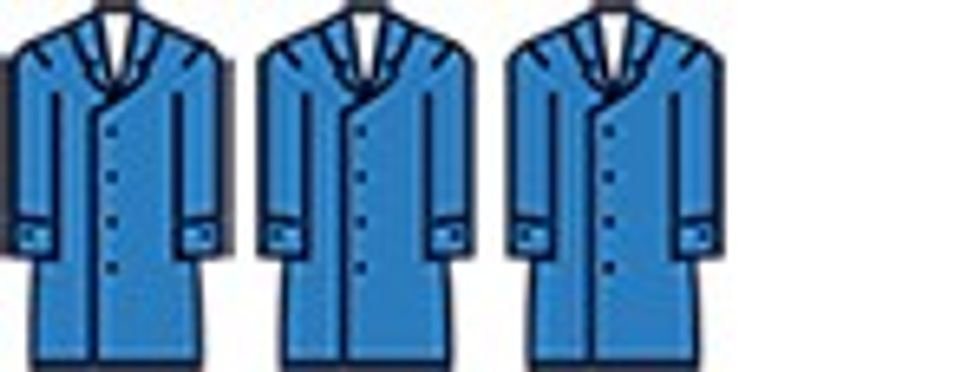BOOK REVIEW: Sailing Upwind: Leadership and Risk from TopGun to the Situation Room
By Admiral Sandy Winnefeld / Naval Institute Press
Reviewed by Cipher Brief Expert Marc Polymeropoulos
The Reviewer: Marc Polymeropoulos served for 26 years at CIA and retired from the Senior Intelligence Service in 2019. He is a MSNBC national security and intelligence analyst, a Washington Examiner contributor, and author of Clarity in Crisis: Leadership Lessons from the CIA.
REVIEW: Admiral Sandy Winnefeld is a national treasure having served as an F-14 pilot, TopGun instructor, 37 years in the US Navy, and a four-year stint as Vice Chairman of the Joint Chiefs of Staff. From arrested landings on an aircraft carrier in rolling seas to navigating similar chop in the notorious Pentagon and national security bureaucracy, few Americans have dedicated their entire adult lives in service to their country with such a distinguished record. Americans from all corners of our nation, of all political persuasions, owe Winnefeld a debt of gratitude.
In Sailing Upwind, Leadership and Risk from TopGun to the Situation Room, the Admiral dives into leadership principles he learned during his storied career. It is clear from the pages of this welcome addition to the leadership genre that Winnefeld operated under the notion that leaders are made, not born and that challenging assumptions is learned, not a skill that is just a given.
He provides a useful framework in the book by identifying key “anchors” that define much of his leadership philosophy. Among them, that character is foundational to successful leadership. As is the willingness to be bold. Even the ‘average bear’ can effect change if one is brave enough to lean into it. He warns that at times, “incredibly bright adults will work incredibly long hours perfecting fundamentally flawed concepts.” Many who worked in government can identify with and Winnefeld thankfully dedicated much of his career to challenging conventional wisdom. We are all better for it.
As a former CIA officer, I was drawn to the numerous experiences the Admiral describes in his interactions with the intelligence community. From the importance to the U.S. military of information provided by the legendary spy Tolkachev, to his time working closely with senior IC leaders, it is clear that Winnefeld understands the value of intelligence in both operational practice (how a human CIA source can end up making a true difference in war fighting) and collaborative policy making at the senior levels. A memorable line in the book “diplomats are from Venus and warriors are from Mars” -is not at all derogatory; instead, it notes that differences in approaches to the exercise of U.S. national power can be quite effective when blended together.
Looking for a way to get ahead of the week in cyber and tech? Sign up for the Cyber Initiatives Group Sunday newsletter to quickly get up to speed on the biggest cyber and tech headlines and be ready for the week ahead. Sign up today.
I find that current events always seem to provide real world vignettes in leadership books. After having written my own and spending a great deal of time on the leadership circuit, I always look for nuggets I can “borrow.” I found one in a story Winnefeld tells of an enlisted sailor who is in charge of the catapult on board an aircraft carrier. At just 19-years-old and one year out of boot camp, this sailor is put in charge of a $50 million aircraft and the life of the pilot onboard. Why does this matter?
There is an ongoing debate in the national security community right now, about the age of U.S. military members with access to classified information. Winnefeld’s vignette reinforces the point that young men and women in national security, often only years from high school, are given huge responsibilities. An issue that has drawn even more attention with the arrest of a young airman charged under the Espionage Act.
My favorite leadership trait comes out clearly in this book and it is one that I tried and often failed at practicing in my own career. The Admiral’s relentless pursuit of excellence was combined with a good dose of humility. That word is so important. Winnefeld notes that after a hop in his F-14, “the truth always emerges in the debrief.” And he notes that a pilot’s “ego was the most powerful impediment to improvement.”
Sailing Upwind ironically suffers from what we all similarly suffered at CIA when promoted, i.e. a return from the field to a less rewarding life at headquarters. Life in the Washington power corridors is simply not as interesting as time in the fight. Whether one is a CIA case officer or the pilot of a supersonic aircraft, those moments on the edge will always be the highlights of one’s career.
Winnefeld’s description of his time at the Pentagon, culminating in becoming the ninth Vice Chairman of the Joint Chiefs, simply was not as interesting to this reader as the thrill he described of flying the Tomcat or commanding a nuclear-powered aircraft carrier. I don’t fault the Admiral for this. As he notes, he attended 1,200 meeting in the White House Situation Room. I bet he wished those hours instead, were spent high above the USS Teddy Roosevelt.
Sailing Upwind earns a solid three out of four trench coats.
The Cipher Brief participates in the Amazon Affiliate program and may make a small commission from purchases made via links.
Read more expert-driven national security insights, perspective and analysis in The Cipher Brief because National Security is Everyone’s Business.




